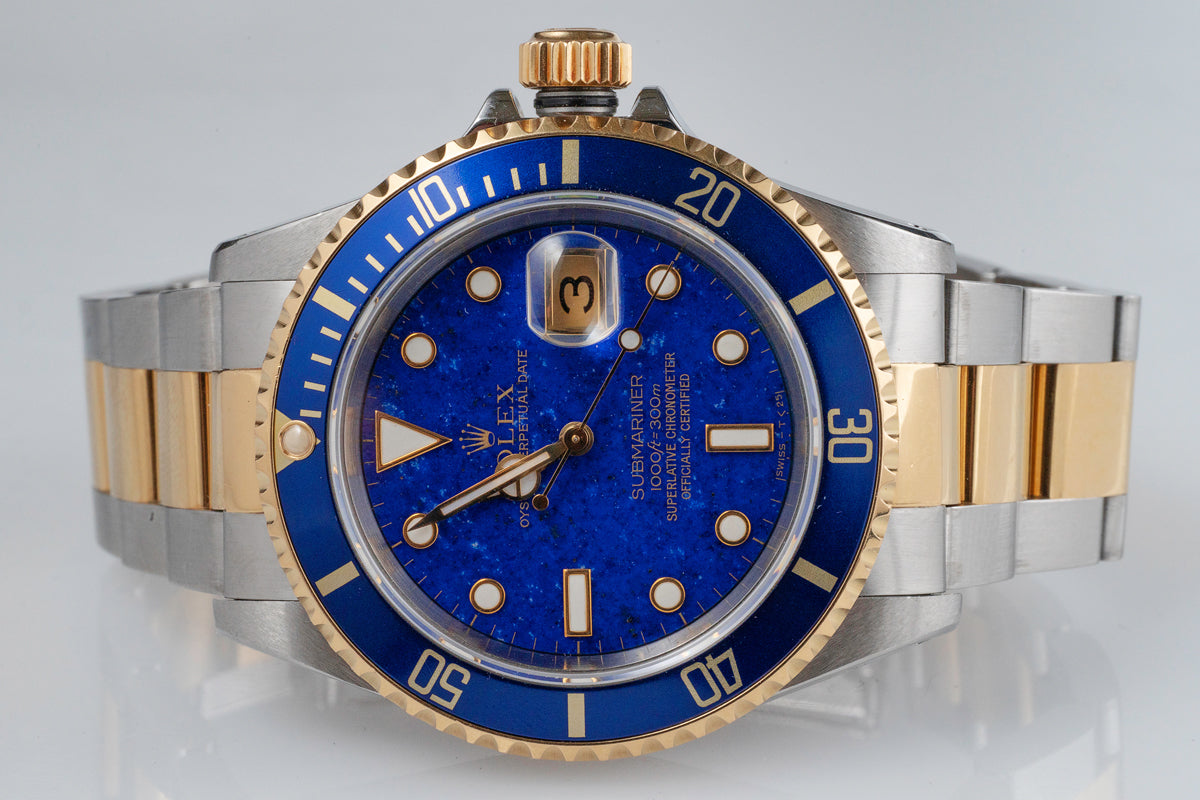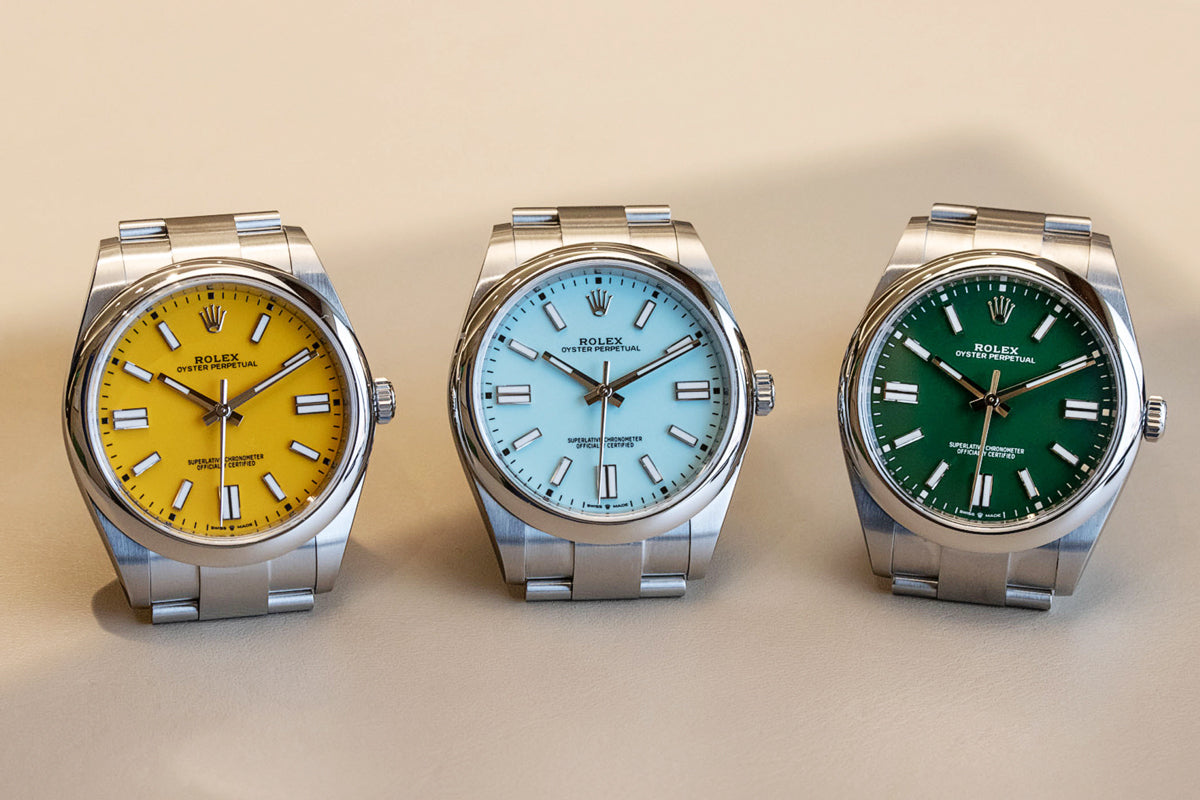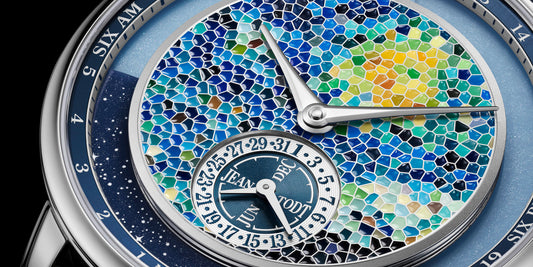Who says Rolex has to play it safe? We take a look at some of the Swiss giant's most outrageous offerings...
Everyone loves Rolex – including the people who hate Rolex. But it’s easy enough to understand the point of view of those who fall into the latter camp: Rolex likes to put up numerous barriers to entry, in order to preserve their precious brand value.
And the Swiss icon is frequently accused of being a one-trick pony: the steel sports watch is territory they have quintessentially made their own. By definition, these are watches that all look largely the same – unless you start messing around with bracelet metals and dial colours. In doing so, you inevitably end up with a more colourful and shiny watch, but the (already elevated) price premium then tends to rise even further. As a result, any Rolex that isn’t absolutely classic in looks is often billed as being tasteless or attention-seeking in some way. Therein lies the archetypal problem.
But here at WatchGecko, we believe that the diversity and occasional ostentation of certain Rolex models should be celebrated rather than derided: just check out Tim’s great article, Is This The Most 'Rolex' Rolex Watch?'.

The Rolex Submariner ref: 16613 with lapis dial - Image Credit: Watchcollecting.com
And here’s another one that won’t pass unnoticed, up for sale on the time vacuum known as www.watchcollecting.com. It’s possibly the most eclectic Rolex we’ve come across for a while. On the face of it, what you see here is a two-tone bi-metal Submariner from 1993 (16613 reference), so nothing too spectacular to write home about so far.

The Rolex Submariner ref: 16613 with lapis dial - Image Credit: Watchcollecting.com
This one, however, was fitted with a blue lapis dial at the time of purchase: ordered from the factory, and therefore making it the original dial. This can be verified from the stack of documentation, including the original receipt, that comes with it. The provenance of the watch – vital, given the chunk of change that’s going to be needed to secure it – is second to none, as it’s been family-owned from new.
It’s the combination that makes it so rare, as the blue lapis dial was normally fitted to the full-house 18-carat gold Sub: in other words. the sort of thing that you might see at Dubai Duty Free shop.
Adrian Hailwood of Collecting Watches – a man who has clocked a few sights in the watch world – has only ever seen one like this before: and that was at auction in Sweden three years ago. It’s on sale right now, so check out the auction right here.

The current Rolex Oyster Perpetual 'Stella' dials - Image Credit: monochrome-watches.com
Some Stella choices
While the lapis dial is definitely an unusual sight, Rolex has never shied away from a splash of eccentricity and colour when it comes to dials in the past. The most well-known are probably the ‘Stella’ dials, in a cornucopia of colours, which originally adorned the Day-Date in the 1970s. Interestingly, this concept was resurrected for the latest Oyster Perpetual releases this year (see pic above), which turned out to be wildly popular. Who says that Rolex and bright colours shouldn’t mix?
Contrary to popular belief, these dials weren’t named after the artist Frank Stella: instead ‘Stella’ was more prosaically the name of a pigment and lacquer supplier near Geneva that Rolex used to make the dials. That company is long dead, with Rolex now using more modern techniques to create the latest colourful Oyster Perpetuals.
Out of this world
Other esoteric watch dials from Rolex include the ‘meteorite’ dial, which literally fell to earth from the outer reaches of the galaxy (making a mere ‘moonwatch’ seem tame).

The Rolex GMT Master II with meteorite dial - Image Credit: Watchcollecting.com
Rolex was the first manufacturer to create a watch dial from slices of meteorite, which form a unique pattern of crystalised iron and nickel composites. These dials are now incredibly prized, seen on a variety of Rolex models: most recently the GMT Master. And the desire to own one is evidenced by the auction results. For example, the GMT Master II pictured above had collectors so hot under the collar that the winning bid on watchcollecting.com reached a whopping £42,850 + 6% buyers fee!

The Rolex with meteorite dial - Image Credit: Watchcollecting.com
There’s also Onyx, Mother of Pearl, Agate, Ammonite, Bloodstone, Aventurine, Jasper, Blue Coral and Malachite – among several other materials. Once you start looking, there’s actually a huge array of special Rolex dials out there: many of which will need a degree in geology to properly understand. There were predominantly produced during the 1980s, paired with gold bracelets (hence the rarity of the example up for auction this week).
The chameleon

An 18ct gold Rolex Submariner ref: 1680 with 'tropical' dial - Image Credit: Bob's Watches
It's worth noting that not all unusual Rolex dials are the result of intention. Rare examples of vivid colours can also be found that weren't created by design, but rather the passing of time and force of natures, aka 'tropic' dials. Unlike the other examples listed here, these are dials which were originally sold as a standard colour but which have, over time, developed unique patina and discolouration from natural ageing and exposure to UV. This ageing process has usually taken hold due to imperfections in the original dial making process. The 18ct gold Rolex Submariner 1680 pictured above has a tropical dial that's just off the scale! Just take a look at those mottled aqua colours, and bear in mind that this would have been a flat blue dial (you can still see hints of the original colour between the one and two o'clock markers and to the left of the four o'clock marker).
Mother Nature has the final word

A Rolex Day Date President ref: 18038 with Birchwood dial - Image Credit: Bob's Watches
Those who really want to go back to nature with Rolex can always hunt down a wooden dial version, which are definitely an acquired taste. Rolex also made a ‘bark’ finish for the Day-Date, with a textured bracelet and bezel reminiscent of tree bark (irrespective of whether the dial itself was actually made of wood).
If you’re really keen on a wooden dial Rolex, again, there was no shortage of choice: birch, sequoia, mahogany and walnut were all made, but are all getting quite hard to find now. These were actually produced right up to the 2000s, but they have been prone to cracking – so approach with caution.
What do you think then? Is an ‘ornate’ Rolex a desirable rarity – or do watches like these simply meddle with a desirable winning formula?
Looking for more articles on Rolex? Then check out the links below:
The Ultimate 36mm Rolex Explorer (2021) – The Rolex Explorer 124270 Review
Is This The Most ‘Rolex’ Rolex Watch?







